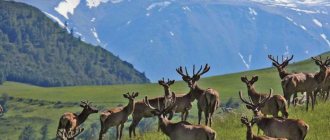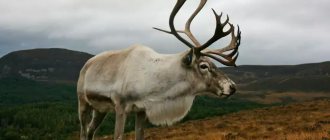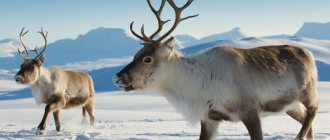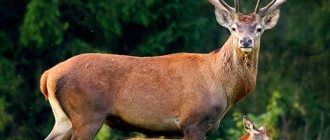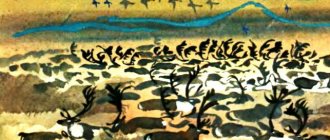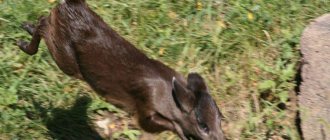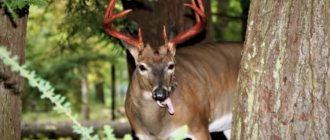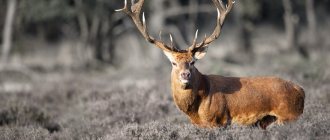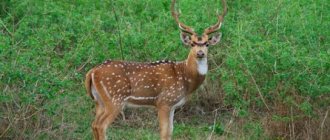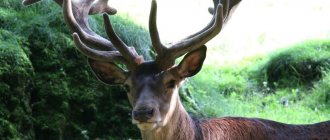If you love intellectual relaxation, then you probably do crossword puzzles or scanword puzzles in your spare time. Of course, this is a very exciting activity that allows you to expand your horizons and demonstrate your erudition.
Just how often have you encountered a situation where you need to guess, for example, a 6-letter word that you have no idea about? Most likely, you will remember more than one such case when, due to such an unfortunate misunderstanding, another scanword puzzle remained incompletely solved. But now you have a unique assistant - the Crossopen.ru !
Answers to scanwords on VKontakte, Odnoklassniki and many others
What is our service?
It will replace you with many dictionaries, encyclopedias and well-read relatives with whom you previously consulted if you were unable to find the right word on your own. With Crossopen.ru you can easily solve a crossword puzzle of any difficulty level using an intuitive search form.
The main advantage of our service is a huge database of words and questions for which you can find the appropriate answer. A user-friendly interface will provide you with a quick search for words of 3, 4, 5 or more letters . It is important to note that at the same time you can clarify your request by indicating the subject, as well as the letters you already know - the so-called word search by mask .
Let's look at the interface using a clear example: you need to find out the poet's last name, which has 6 letters, and the third is “sh”. You set up a search for 6-letter words, click on the corresponding empty cell and insert the letter you know, after which you specify the keyword - “poet”. As a result, you get various options, one of which is sure to be correct. This way you can find any answers to crossword puzzles , because it’s very simple!
You can solve any crossword puzzle!
Our service is absolutely free, and you can freely use it to search for answers to any crossword or scanword puzzle, both from the newspaper and on the Internet. For example, our database contains almost all the answers to Odnoklassniki and VKontakte crossword puzzles, which will allow you to solve them quickly and with pleasure.
Plus, you can create these kinds of brain teasers yourself! To do this, just list the words in alphabetical order and choose the options that suit you with descriptions so that the resulting crossword puzzle is interesting and educational.
So if you like to solve crosswords, the Crossopen.ru will become a convenient and reliable assistant for you. Spend your free time doing your favorite activity with pleasure!
Red deer, or maral, or wapiti
Red deer (Cervus elaphus)
Class - mammals
Order - artiodactyls
Suborder - ruminants
Family - deer
Rod - real deer
The red deer combines many subspecies, the representatives of which differ from each other only in size, weight, color and some other differences. Caucasian deer, European deer, maral, Bukhara deer or tugai deer, wapiti, wapiti - all of them are subspecies of this animal. This can be easily determined by such parameters as the animal’s fur, which in summer does not have a spotted color, and the white spot under the tail is large and rises above the beginning of the tail. Cervus elaphus has horns with a large number of processes (usually at least five), which form a kind of recognizable crown at the top of the horn.
Appearance
Subspecies of red deer have different sizes. For example, fairly large deer and wapiti weigh more than 300 kg and reach a body length of more than 2.5 m with a height at the withers of 130–160 cm, and a small Bukhara deer weighs less than 100 kg and has a body length of 75–90 cm. Subspecies and the shape of the horns. For example, a European deer has a large number of branches, and deer do not have a crown, but the horn itself is very massive and produces 6–7 branches. There are more than one and a half dozen subspecies of red deer.
Habitat
Red deer live in many places around the world. The area is quite large. This animal can be found throughout Western Europe, in Algeria and Morocco, in Southern Scandinavia, Afghanistan, Mongolia, Tibet, and in Southeast China. Cervus elaphus is most widespread in North America. Introduced to Australia and New Zealand, Argentina and Chile. There the red deer has acclimatized and feels great.
In the territory of the former Soviet Union, this animal was found in the Baltic states, Ukraine, and Belarus. The distribution of red deer in the Central Russian forest-steppe in the past remains an unclear issue. According to some sources, it never lived in the region under consideration and was acclimatized at the end of the 19th century; according to others, its range included this territory, but was completely exterminated here by the middle of the 18th century. Currently, deer are numerous in the Voronezh and Khopyorsky reserves, and are found in other forests of the Lipetsk and Voronezh regions. In the Tambov region they were exterminated in the 90s of the 20th century.
Red deer prefers deciduous, subtropical and taiga forests, river banks and mountain alpine meadows. In the Sayan Mountains there are deer that live in the upper reaches of forests that turn into alpine meadows. The favorite habitat of wapiti is the oak forests of Sikhote-Alin. Bukhara deer prefers river banks, thickets of poplars and various shrubs.
Behavior
Red deer occupy a territory whose size depends on how much food there is on it. The more food there is, the smaller the size of the habitat may be. Animals mark their areas, and individuals from another herd no longer cross the boundaries, and if they enter the territory by accident, they are immediately expelled by adult individuals, who make sure that the territory of their habitat is inviolable. On 1000 hectares, a herd of 4 deer, or maybe 30, can live and feed, depending on the feeding capacity of the area.
Deer living in the mountains lead a nomadic lifestyle, in the fall they descend to lower, less snowy places in the mountains, and from spring to autumn they rise upward, where there is enough food. As soon as the first snow falls, females with children head to the wintering areas; a little later, males follow in the footsteps of the females. These animals are excellent swimmers, so obstacles in the form of rivers are not scary for them.
In captivity, deer live 25-27, sometimes even 30 years. Under natural conditions, the deer age, as a rule, lasts 12-14 years. Females live significantly longer than males.
Nutrition
Red deer eat a wide variety of foods. The main food of this animal is herbaceous vegetation, cereals, and legumes. In the spring, after a difficult time of year for animals - winter, special importance is attached to eating protein plants to replenish strength and obtain complete vitamin food. In winter, if the snow cover is not very large, red deer takes advantage of the opportunity to obtain leaves from trees that have fallen in the fall, various stems and bark of shrubs. Pine and spruce needles are also used. A great help for deer in winter are acorns, which the animal extracts from under the snow. Chestnuts, all kinds of nuts, and seeds of many types of plants are also eaten. Mushrooms, lichens, fruits, berries - everything is eaten by the red deer. Nutrition may vary depending on what the harvest was in the previous winter. Red deer consume salt as food, obtaining it from salt licks. They lick salt, gnaw the earth, which is full of mineral salts, and replenish the lack of minerals in the body using mineral springs. In the heat they do not graze, but lie in the shade, only going out to pasture in the morning and evening. They escape the heat in rivers, where they can spend more time of the day. Bukhara deer goes out to pasture at night. In winter, when the air temperature drops low enough, animals are forced to eat almost all day to replenish their energy reserves.
Reproduction
A herd of red deer consists of 3–6 individuals, sometimes their number increases. The herd consists of an adult female and her cubs from several previous years. The rut begins in the fall. During this period, males organize harems of a certain number of females, whose number can be from two to twenty. At other times, males live separately. The roar of deer can be heard for about a month; it carries very far, several kilometers away. The voice of a roaring deer includes a variety of sounds, from hoarse to low and drawn-out, reminiscent of a moo. The most accurate definition of the roar of a deer is a “trumpet voice”; it is the sound of a trumpet that is closest in sound to the voice of a red deer. The appearance of a roaring deer was depicted by artists in paintings: a head thrown back on its back with luxurious antlers, hooves scattering the ground - all this is characteristic of these animals.
During the rutting period, fights between males are possible, thanks to which the animals establish primacy. The rivals clash their horns, trying to knock each other down. Weaker males quickly leave the battlefield. You can tell whether a male is strong or weak not only by his appearance, but even by his voice. A strong and more experienced deer has a hoarse and low voice, while a young and weak one has a higher and clearer voice. Fights extremely rarely end tragically, although there have been cases when males broke their horns, or were so intertwined with them that they could not disentangle themselves and simply died of hunger.
Among the males there are hornless individuals - they do not participate in fights, but try to quietly get into someone else's harem.
Males are ready to breed at 5–6 years of age. Females become sexually mature earlier - by the age of three, sometimes even earlier. Pregnancy lasts 8.5 months, and fawns are born in the warm season. Calving occurs in secluded places. Females usually give birth to one fawn, rarely two. The coloring of the little fawn is spotted, which greatly helps it to camouflage. At first, this is the fawn’s main defense. They begin to feed on their own at the age of one month, but in parallel with the grass they suck the female, sometimes until they are one year old.
After a year, young males begin to develop tubercles on their foreheads, which will later turn into luxurious horns. Although the first antlers will not have branches and will be shed in the spring. With each subsequent year, the number of processes on the horns will increase, and the horns themselves will become more powerful and stronger. They reach their largest size when males are between 5 and 12 years old, then they become smaller and weaker every year, and the number of shoots decreases. The antlers are shed in March–April, and sometimes, in warm winters, in January–February. Ossification of antlers occurs in July–August.
Captivity
Fences have long been used to preserve deer. Fences block the most likely routes for deer to exit from pastures of one season to pastures of others, and natural obstacles are very widely used in summer pastures - sea bays, chains of lakes, large rivers and rocky areas of the sea coast.
To reduce the loss of deer, it is very important to build fences on the border of autumn and winter pastures, but it should be taken into account that with the onset of freeze-up, water bodies are no longer an obstacle to deer, so the fences here should be continuous.
Many people build fences mainly from 3-4 mm galvanized wire, stretched in 5-6 rows on burnt (or impregnated with antiseptics) wooden posts dug into the ground. For one kilometer of fence, 600-650 kg of wire and 250-300 posts are consumed.
When starting to build fences, it is necessary to correctly calculate the size and reindeer capacity of the fenced pastures, provide for the possibility of grazing individual areas in sequence and introducing pasture rotation. If the fenced area has a sufficient supply of feed, keeping reindeer freely on it ensures the preservation and high nutritional status of the livestock.
A dramatic reduction in unknown deer losses in fenced pastures can fully justify the capital investment in fence construction within 3-5 years.
Free-camp housing of reindeer provides for a significantly greater degree of reindeer domestication compared to other grazing systems. This degree is achieved by systematically feeding the deer with mineral licks, leftover food, periodically tying calves and their mothers near the home, and protecting them from insects with smoke fumes and chemicals.
Reindeer, accustomed from a very early age to constant contact with humans, even with frequent changes of pasture areas, do not go far from the dwellings of reindeer hunters and get used to returning to it in case of danger - an attack by wolves, the mass appearance of midges, etc. But even with such the system needs to go around the grazing herd from time to time, collect reindeer and, therefore, have 2-3 shepherds responsible for preserving the herd.
Feeding ration for 5 head of red deer over one year old:
| List of feeds | Unit | Winter (October-April) | Summer (May-September) |
| Brooms (branches) | PC. | 36 | 24 |
| Cabbage | kg. | 5 | — |
| Potato | kg. | 1,9 | — |
| Carrot | kg. | 5,5 | 3,0 |
| Beet | kg. | 3,6 | — |
| Oats | kg. | 4,8 | 1,2 |
| Wheat | kg. | 3,0 | 1,2 |
| Cattle feed (or replaced) | kg. | 3,6 | 4,8 |
| Bran | kg. | 1,8 | 1,2 |
| Hay/Grass | kg. | 3,0 | 60 |
| Salt | 0,6 | 0,6 | |
| Berries (fruits), apples | 1,2 | — | |
| Mineral and vitamin supplement for cattle | kg. | 0,06 | 0,06 |
| total | 34.06 + brooms | 72.06 + brooms |
Winter. Total per day from November 21 to May 19 for 5 heads of 1-2 year old red deer.
| List of feeds | Per day kg | Per month kg | For the season, taking into account losses kg |
| Brooms (branches) | 36pcs | 1080pcs | 6480 pcs |
| Cabbage | 4,8 | 148 | 900 |
| Potato | 1,9 | 68 | 400 |
| Carrot | 5,5 | 160 | 970 |
| Beet | 3,6 | 108 | 648 |
| Oats | 4,8 | 148 | 890 |
| Wheat | 3 | 90 | 530 |
| Cattle feed (or replaced) | 3,6 | 108 | 648 |
| Bran | 1,8 | 55 | 320 |
| Hay/Grass | 32,5 | 800 (1200) including losses | 7200 |
| Salt | 0,6 | 18 | 108 |
| Berries (fruits), apples | 1,2 | 36 | 220 |
| Mineral and vitamin supplement for cattle | 0,06 | 1,8 | 11 |
| Total purchased feed or feed that needs to be stored | 922 kg of which: grains - 396, tubers - 508, animals - 126 hay - 1200 kg. | ||
Summer. Total per day from May 20 to November 20 for 1.5-2 year old and older deer.
| List of feeds | Per day kg | Per month kg | For the season, taking into account losses kg |
| Brooms (branches) | 24 | 720 | 4320 |
| Cabbage | — | — | |
| Potato | — | — | |
| Carrot | 3 | 90 | 340 |
| Beet | — | — | |
| Oats | 1,2 | 36 | 220 |
| Wheat | 1,2 | 36 | 220 |
| Cattle feed (or substitutes) | 4,8 | 148 | 870 |
| Bran | 1,2 | 36 | 220 |
| Hay/Grass | 60 | 1800 | 10800 |
| Salt | 0,6 | 18 | 108 |
| Berries (fruits), apples | If possible | 36 | 120 |
| Mineral and vitamin supplement for cattle | 0,06 | 0.18 | 1,8 |
| Total purchased feed or feed that needs to be stored | 923 kg of which: grains - 252, tubers - 90, animals - 126, grass + hay (5-25%) - 1800 kg | ||
The transition in feeding from winter to summer diet is carried out smoothly. The maximum consumption of freshly cut grass is up to 60 kg per day. You can start mowing daily at the beginning of June, and in May a significant part of the grass should be replaced with hay. With the growth of the population in the enclosure, this consumption is easy to implement (the number of deer will not increase more than 2 times - due to releases).
To improve the quality and nutritional value of the mown grass, it is necessary to gradually sow red clover, vetch, ryegrass, and lupine. The maximum grain consumption per month is 396 kg + 612 kg for 6 months, however, with the growth of populations in the wild for feeding, this figure will increase almost in proportion to the number of approximately 70% with an increase in number of 100%.
Thus, with an increase in deer to 25-30 heads per month, it will be necessary to feed up to 5000 kg per month in winter.
